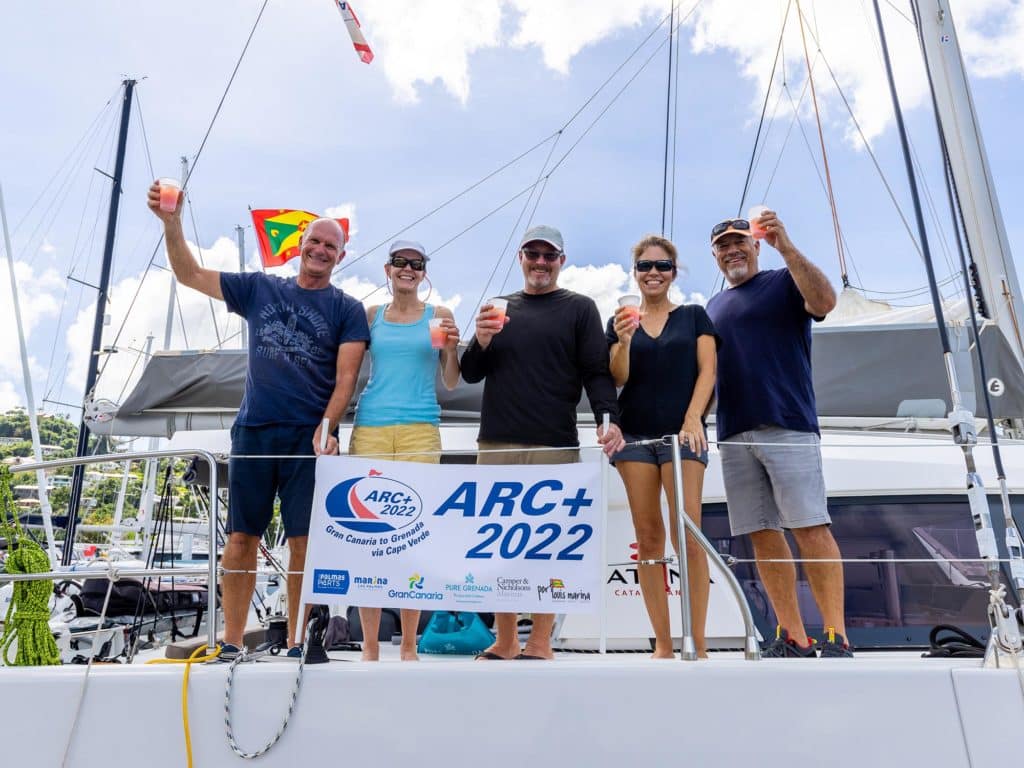
For the second year in a row, the World Cruising Club’s Atlantic Rally for Cruisers Plus (ARC+) fleet arrived in Grenada in late December after much preparation and anticipation. Crews were greeted on the island with trays of cold rum punch, warm smiles from rally organizers, and celebratory air horn salutes from other rally participants and friends. The docks buzzed with conversations of fish caught, sails torn, and the challenging conditions that plagued the first few days of the 2,150-nautical-mile Atlantic crossing.
The first Atlantic Rally for Cruisers (ARC) departed Las Palmas in 1986 as an amateur race across the Atlantic. The WCC now organizes a variety of events including circumnavigations, ocean crossings and regional rallies. The ethos remains the same: to support cruisers and amateur sailors with an emphasis on Corinthian spirit, safety and camaraderie. This year is the 10th edition of the ARC+, and the second to arrive in Grenada as the final destination.
The ARC+ began as an addition to the traditional ARC route that crosses the Atlantic directly from Las Palmas to St. Lucia. Adding a stop in Mindelo, Cabo Verde, the ARC+ breaks the 2,700-nautical-mile passage into two legs, and has become increasingly popular with families. This year, more than 30 children crossed the Atlantic with the ARC+, aboard 90 boats carrying over 400 crew from 30 nations. They set sail from Las Palmas de Gran Canaria on November 6 for the five- to seven-day passage to Cabo Verde. After a few days of rest, repairs and reprovisioning, the fleet embarked on the second leg of the passage on November 18, with the majority crossing the Atlantic to Grenada in 12 to 16 days.
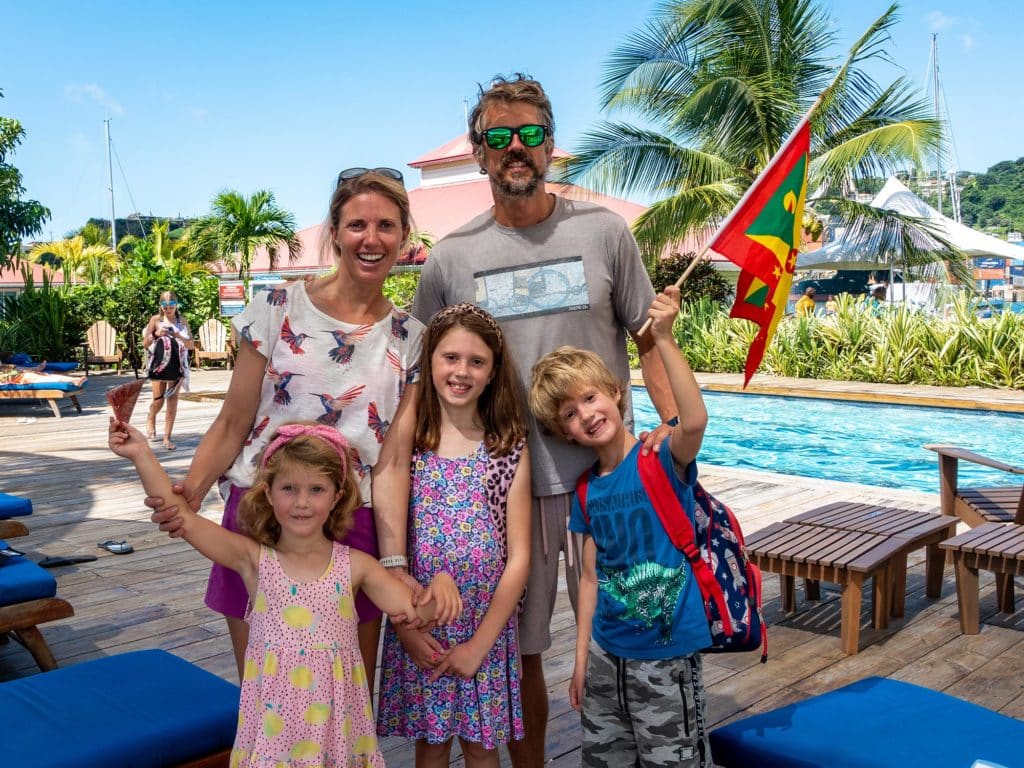
Participants sailed aboard an array of yachts, from classic 1970s Swans to self-builds, racing monohulls and newly built multihulls. One of the new boats was Helia2, an Outremer 51 owned by Rob and Ginny Beams from Marion, Massachusetts, that left the factory in early 2022. It’s their sixth boat and second WCC event. They first took part in the WCC’s Caribbean 1500 in 2012 with their three daughters, then ages 8, 11 and 14. The main differences in doing a rally without them? “Less fun, more sleep,” Ginny says. This time around, their crew included two experienced sailors and two non-sailors, “though very good cooks,” she added.
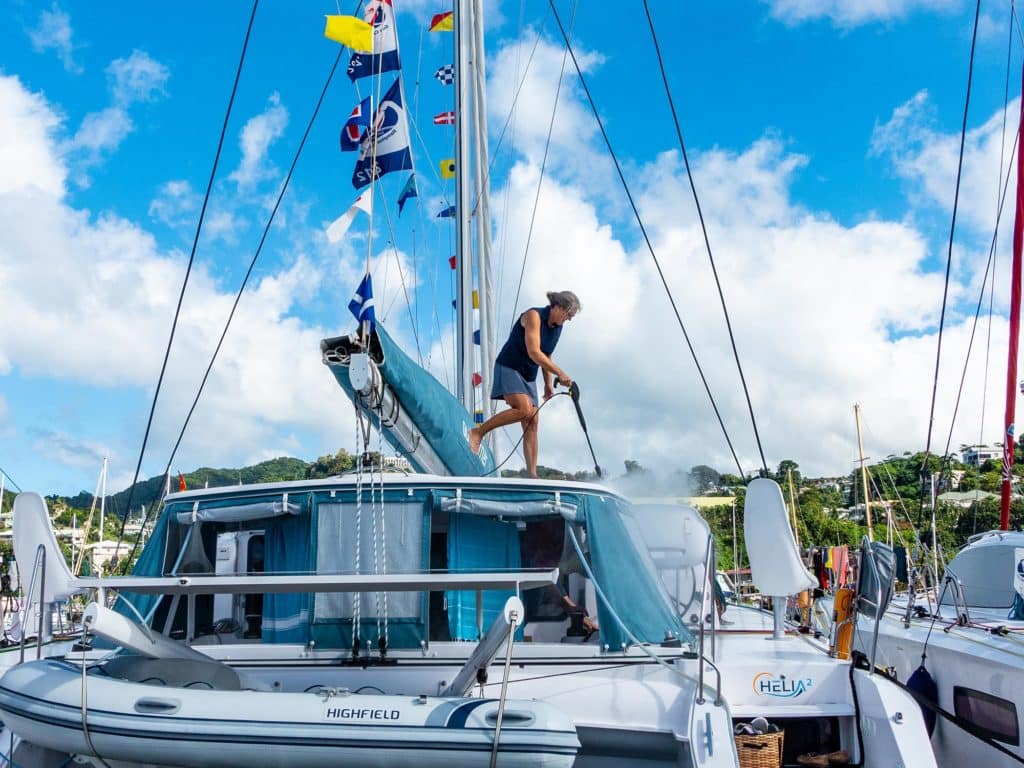
The couple plans to spend the season cruising the Caribbean, with each of their daughters joining them for various intervals. “We’re excited to revisit a number of places that we really enjoyed 10 years ago,” Ginny says. This includes the Grenadines, specifically Union Island and Bequia, plus the Îles des Saintes, Barbuda and Dominica. “Our eldest will be sailing with us the longest, and her favorite island was Dominica,” Ginny adds. “Everyone’s favorite island was Dominica.” Ultimately, they’d like to sail up the East Coast of the United States to Canada, cross to the Azores from Nova Scotia in July, and spend another season in the Mediterranean.
Many other participants have less of a plan. “The fun thing with living on board is that you don’t need to plan too far ahead,” said racing sailor Viktoria Björnberg. You have your house with you, we have everything we need, we can figure it out along the way.” Her husband, Kim Silfving, added, “The only restriction is money and the hurricane season.” The Swedish couple met on the racecourse, married and started a family in Stockholm, spending holidays sailing around the Stockholm archipelago. A few years ago, Viktoria was diagnosed with thyroid cancer, prompting a change of pace. They sold their home, moved aboard their 40-year-old Baltic 51, Alexandra, and began readying the boat to cross the Atlantic with their children, 10-year-old Juni and 6-year-old Nora-Li, along with two other crew.
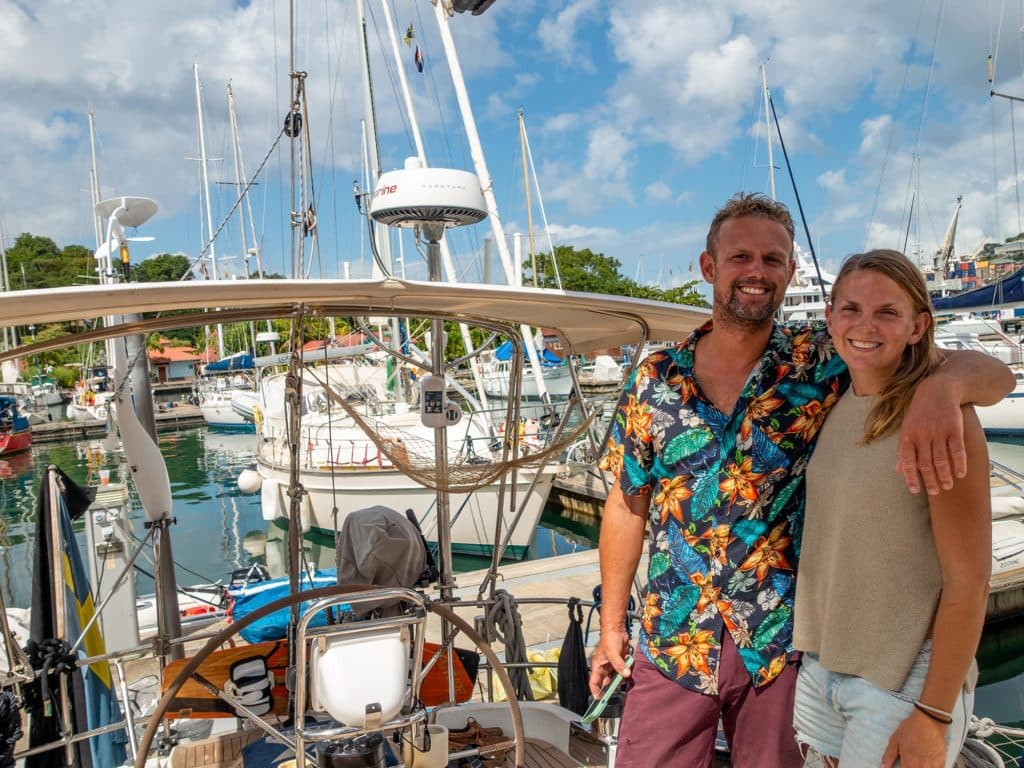
Amy and Simon Warwick also traded urban life for boat life with their three kids: 8-year-old Evie, 6-year-old Harry and 4-year-old Rosie. Theirs was another among the 18 family boats taking part this year. Originally from the United Kingdom, they’ve lived in Alberta, Canada, for the past 10 years, where Simon is a doctor and Amy is a stay-at-home mom. He grew up sailing and gained further experience while in the military, skippering groups of sailors for adventure training in the Baltic. She had no sailing experience until they bought a 23-foot Hunter to cruise a local lake near Calgary. “The lake freezes for nearly eight months of the year, and it just wasn’t enough for him,” she says. Their dreams of adventure really took hold while wandering the docks of Nassau, Bahamas, during a family vacation. “It became his obsession,” she says. “I called it his affair: YouTube and boats.” They ended up buying their Oyster Lightwave 48, Pacific Pearl, sight unseen during the height of the pandemic. The family spent summer 2021 cruising the south coast of the United Kingdom and the Isles of Scilly before registering for the ARC+.
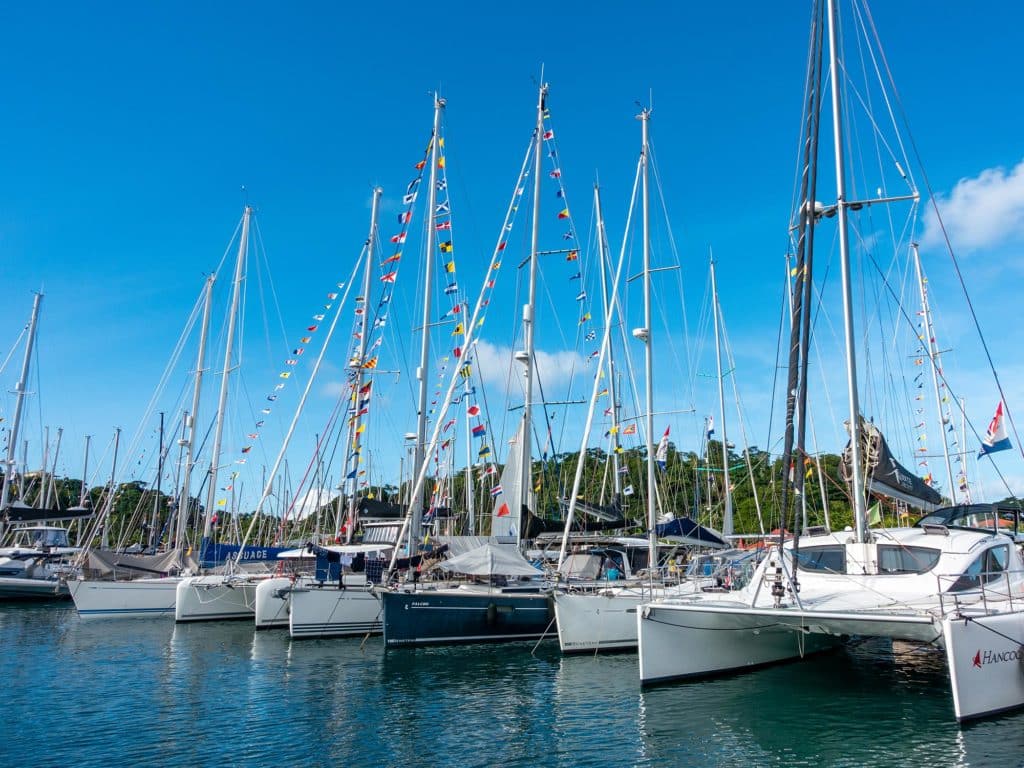
Although the ARC was originally designed as a way for amateur sailors to cross the Atlantic in the safety of a group, many experienced sailors also take part for the community and camaraderie. “We missed sailing in company,” Steve May, a California native, says while sitting aboard his Catana 53, Hanuman. He and his wife of 15 years, Mandula, have spent extensive time cruising the West Coast of the United States and Mexico, and more recently across the Pacific to Australia and the remote waters of Papua New Guinea. When people ask why they joined a rally, their answer is, “For the people.”
Steve and Mandula originally met in high school but didn’t reconnect until years later, after they’d both had what they call “practice marriages.” They bought their first boat in 2007 and Hanuman in June 2021. Their first season aboard the newer boat, they spent 5,000 nautical miles in the Mediterranean in preparation for the 2021 ARC+. On the way to the start line, the boat was struck by lightning, adding six months of unexpected repair work. They recouped, joined the 2022 ARC+ and made it to the start line, only to have a major collision halfway through the first leg of the rally.
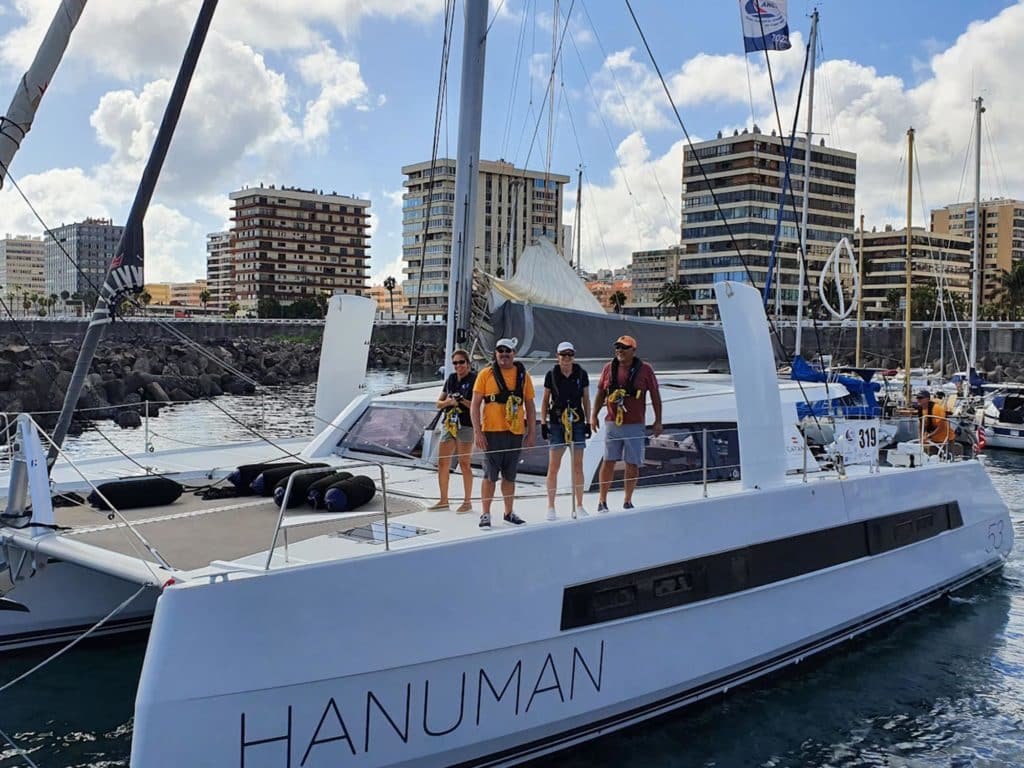
“It was 3 a.m., when all bad things happen,” Steve says. They were sailing dead downwind at 9 knots when the port bow collided with something that brought them to an abrupt stop. The collision spun the boat sideways, and what they now believe was a partially sunken wreck dragged down the interior of the starboard hull, caught the exterior screen of the starboard engine-room through-hull, and broke it clean off. The engine room immediately began taking on water, but the crew were able to get it under control and plug it with a wooden bung. With immediate and continuous support from the ARC+ team, Hanuman made it safely to port in Mindelo, Cabo Verde, where the necessary repairs were undertaken.
Steve grew up sailing in the San Francisco Bay area, and when he was 14, his aunt gave him the Robin Lee Graham book Dove, the story of a 16-year-old boy who sailed around the world. “I thought to myself, Oh, you can do that?” he recalls. “Since then, it’s been a dream percolating throughout my whole life.”
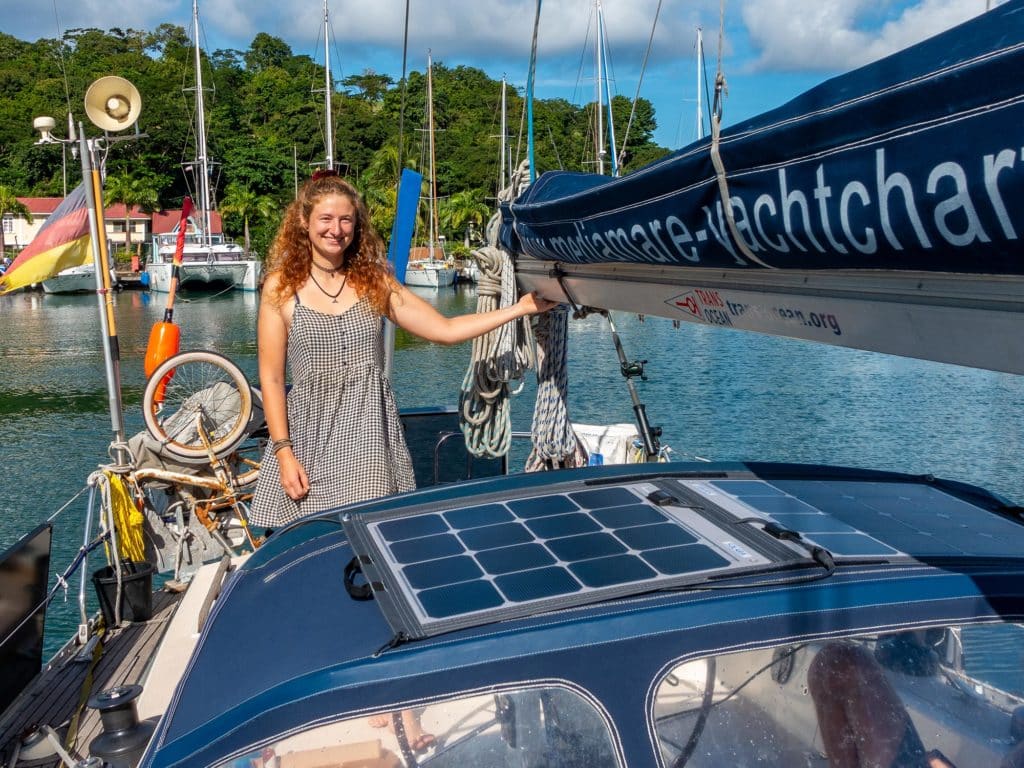
The fleet’s youngest skipper and one of this year’s four female skippers, Ronja Dörnfeld, was also heavily influenced by the accomplishments of young sailors. She’s 25 years old and from Berlin, sailing aboard Malouine, a Moody 41 borrowed from a charter company she worked for in exchange for use of the boat for her three-year circumnavigation. Jessica Watson’s book True Spirit and Laura Decker’s One Girl, One Dream lent inspiration to the decade-long planning process. Ronja recently graduated from college with a bachelor’s degree in geology. She finished and sent her thesis while en route to the start line, and was getting ready to do her final presentation via video chat. “We need to stay near Wi-Fi until then,” she says.
Many participants this year have been talking about the sea state and challenging conditions they had during the crossing: short, steep waves; strong trade winds; and overcast, starless nights led to eerily dark conditions.
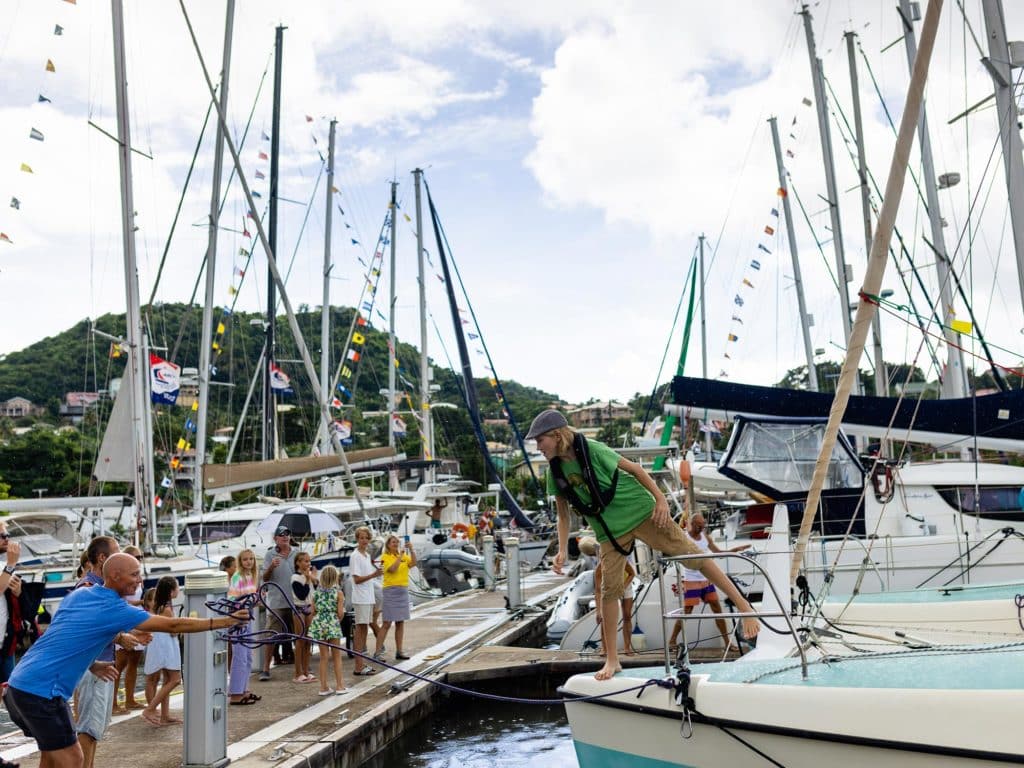
“You don’t know where the bow is. You don’t know how the boat is relative to the waves. It was stressful on the helmsman,” says Giulio Gatti, the skipper of Fra Diavolo, a Mylius 60. Despite the conditions, Fra Diavolo was first over the finish line with a new course record of just over nine days. The owner, Vincenzo Addessi, is a racer who recently decided to transition to cruising life, with loose plans to race the Sydney Hobart Yacht Race in Australia, a longtime dream.
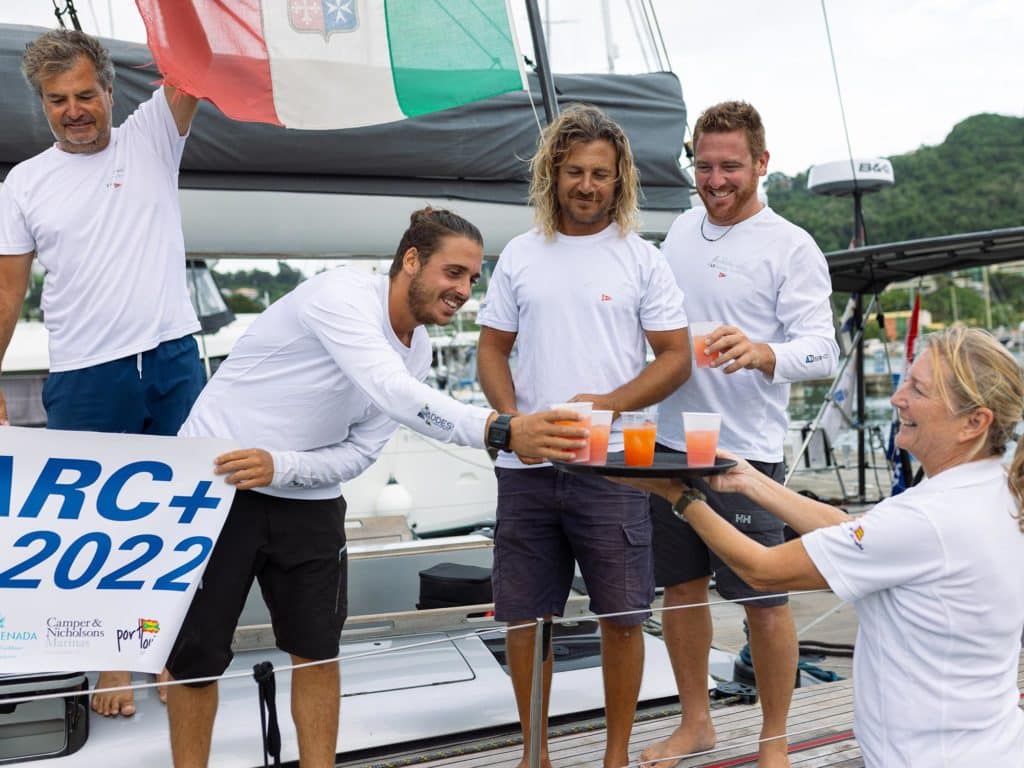
Jean and Christiane Metz on A Plus 2, an Amel 54, intend to continue through the Panama Canal and across the Pacific with the World ARC this year. They have doublehanded more than 80,000 nautical miles aboard A Plus 2, with many of those miles being part of WCC events such as the 2014 ARC, the 2015-16 World ARC and the ARC Europe in 2016. “It’s just a fantastic program,” Jean says. “It’s a floating village.” On long passages, he practices a version of polyphasic sleeping where, throughout the night, he wakes up every 20 minutes to check the sails and instruments for one to two minutes, and then is able to fall straight back to sleep. Christiane isn’t blessed with this ability, and tends to sleep through the night.
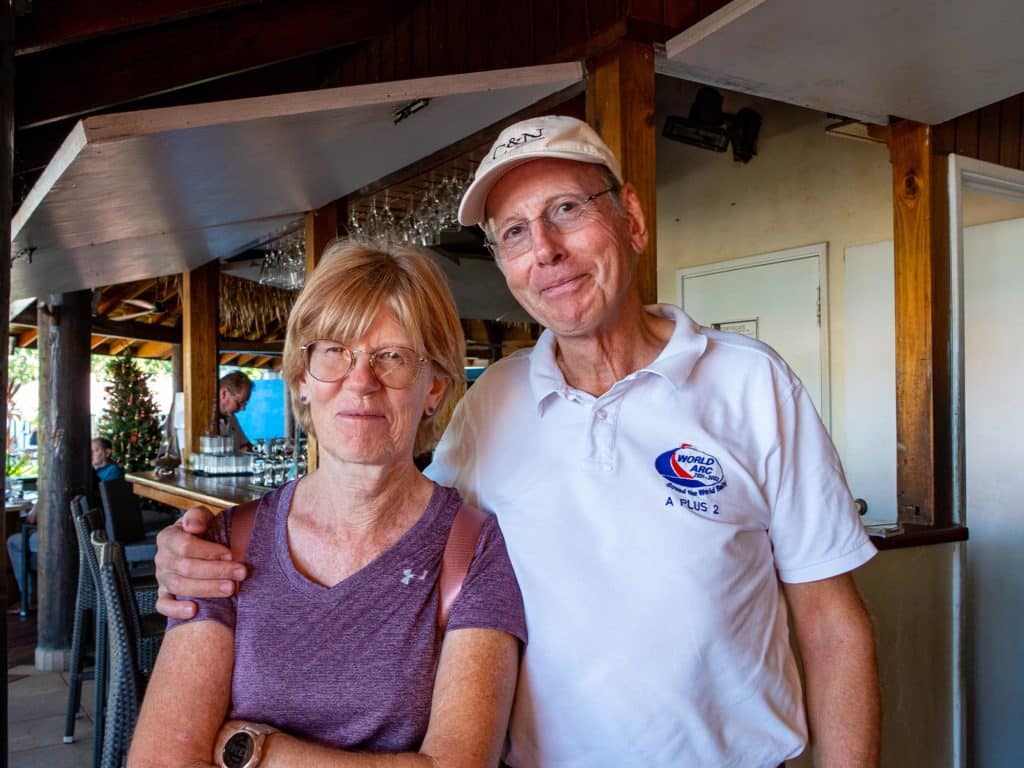
Grand Crew, a Fountaine Pajot Saona 47, ran a more traditional watch-keeping rotation. With five crew aboard, one of the owners, Debra, was the full-time quartermaster, taking care of the provisioning and managing the meals. Each day, one of the four remaining crew was her sous chef. Debra and Scott Burkhardt, are from Denver. They met on a sailing singles website in 2014. While Scott has been cruising for 20 years, this was their first time across the Atlantic, and they were looking forward to spending the next few years sailing around Grenada and the Southern Caribbean.
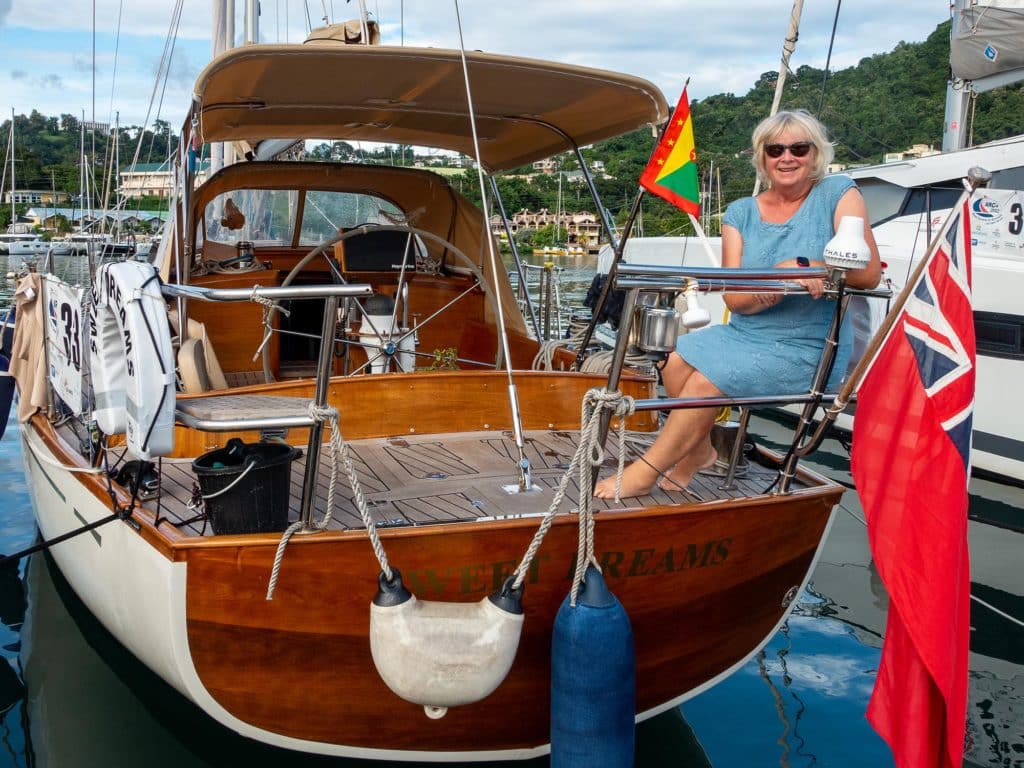
Roz Preston is also planning an extended stay in the Caribbean aboard her boat, Sweet Dreams, a one-off Bill Dixon design that she and her husband, John, spent seven years building themselves at Lyme Regis Boat Building Academy in the United Kingdom. They launched in 2007. After John’s sudden death in 2017, Roz wasn’t sure she’d ever sail again, but after fulfilling one of his final wishes—to have his ashes scattered off the coast of a remote Scottish isle—she decided to cross the Atlantic on her own.
The second day of the crossing was the fifth anniversary of John’s death. “I could have been at home drowning my sorrows, but I was out there on the ocean carrying on his legacy,” Roz says, adding that this was her first and only ocean crossing. “He’d be furious at me for doing it without him, but mostly, he’d be incredibly proud.”








